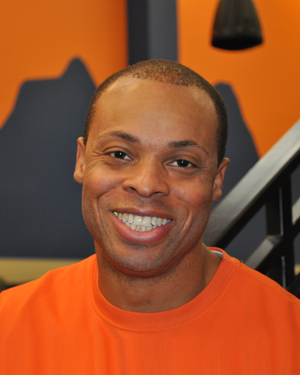Benefits for Individuals and Small Groups
As a Personal Trainer and I’ve been working with athletes and non-athletes for over 16. During this time the approach to training for both individuals and groups has evolved tremendously.
Training athletes in speed & agility can be difficult! Without a specific plan…a session intended to increase speed, can turn into a conditioning workout with no effect on the athlete’s ability to move quickly.
When training athletes in speed & agility it’s necessary to first, assess the size of the group that you will be working with, and down the training plan into several component that you would like to cover.
Some of the components usually covered are:
Linear and Lateral Technique
The first thing we address with groups of any size are the technical components that will make an athlete better, faster and stronger.
Lateral technique focuses on the lateral gait cycle and change in direction of body positions. This type of training should be done with all groups regardless of age and size of the group.
Linear and Lateral Power
The next phase of training involves using different tools to create more power for the athletes. Typically I use sleds, weighted vests, medicine balls, or resistance bands to improve power in both the linear sprinting/acceleration and in lateral deceleration or acceleration.
Linear and Lateral Reaction
When training for reaction we are trying to improve the athlete’s ability to perceive the action and make the appropriate reaction. Drills in this category include change of direction with visual or verbal cues and acceleration drills on visual cues.
Group Sizes:
Less than 3 athletes
With less than 3 athletes, coaching can be very intensive and the athletes can receive direction on techniques with any and all drills. Rest times are accounted for through the training plan to make sure that the athletes get quality repetitions.
Less than 10-15 athletes
Training in groups smaller than 10 can limit the ability to train the group with equipment that’s on hand. If equipment is to be used it will be necessary to partner up the athletes or go in a rotation. The ability to instruct will not be limited, but should be planned out in the speed & agility training program for the day.
More than 15 athletes
With a group of more than 15 athletes restrictions on equipment become a primary concern, typically with groups this size or larger choices of equipment should be easily transportable (cones, small bands). Instruction time is mapped out before hand and is deliberate. Large groups are divided into smaller groups, this will allow for instruction between repetitions. Rest intervals in large groups are less necessary to plan because a normal rotation of drills and groups will allow for even, or positive rest periods.
With groups of any size it is important to approach Speed & Agility with the same type of deliberate plan that is often reserved for strength training. Doing so will insure that sessions will not turn into conditioning workouts, but will instead develop true speed.
I train individuals of all levels in private or group sessions at Phys-Ed Health & Performance Center. Contact me at Lushon.Phyed@Yahoo.com for an assessment.
